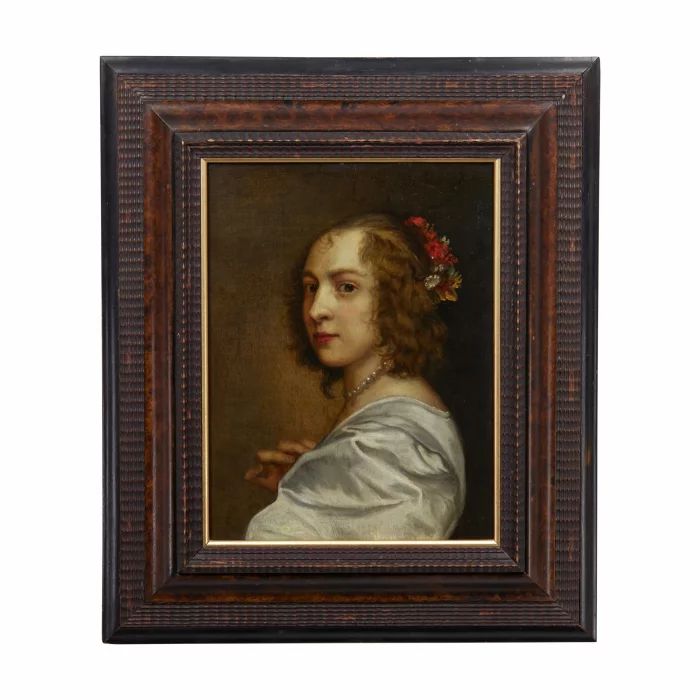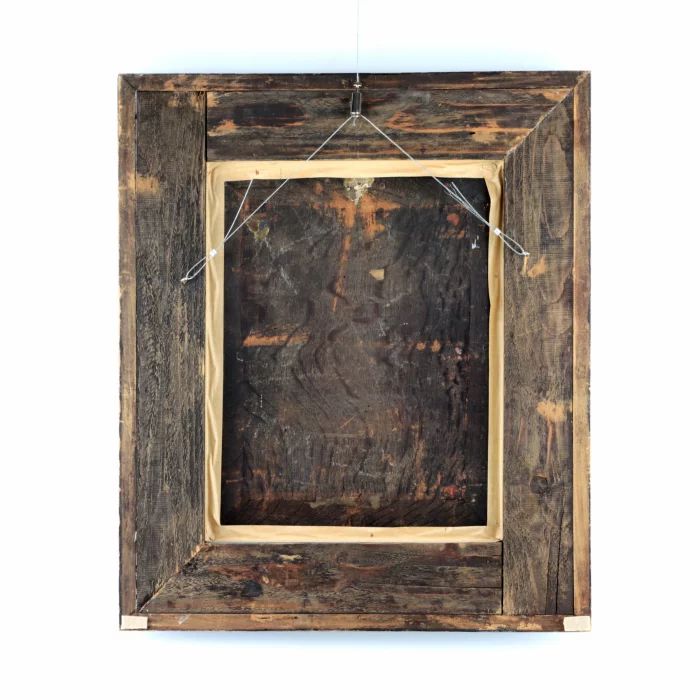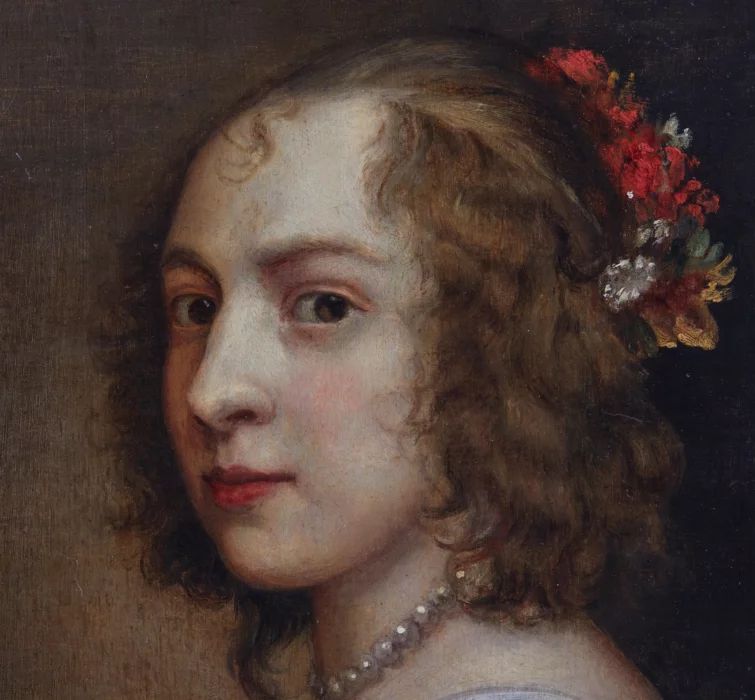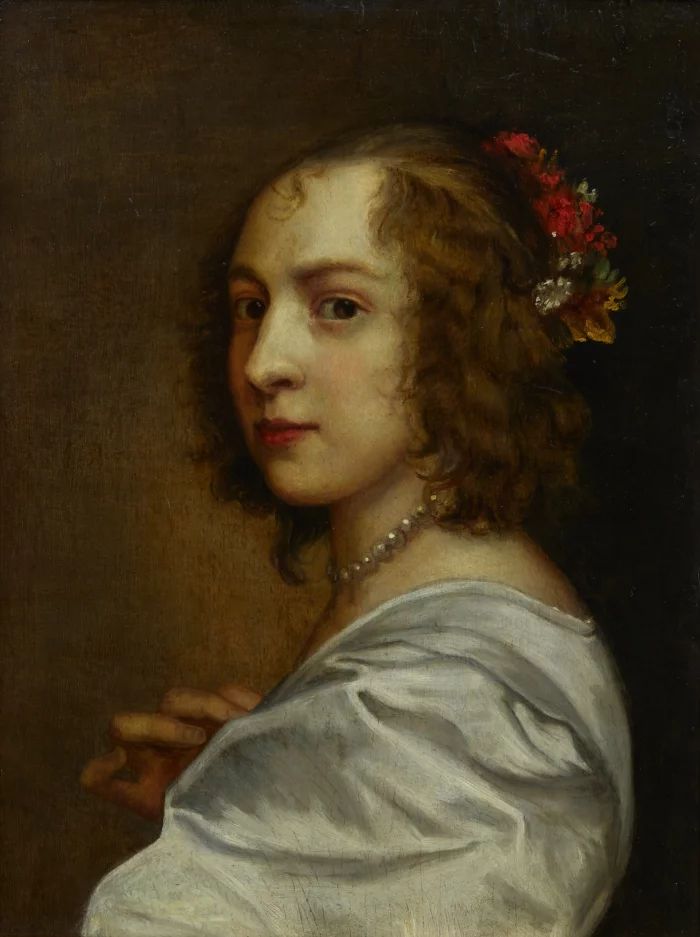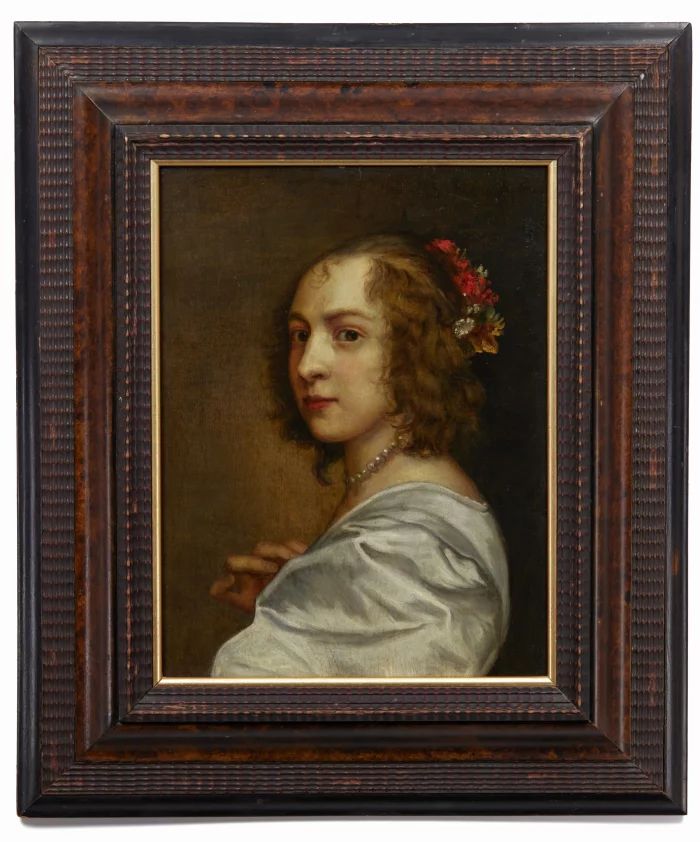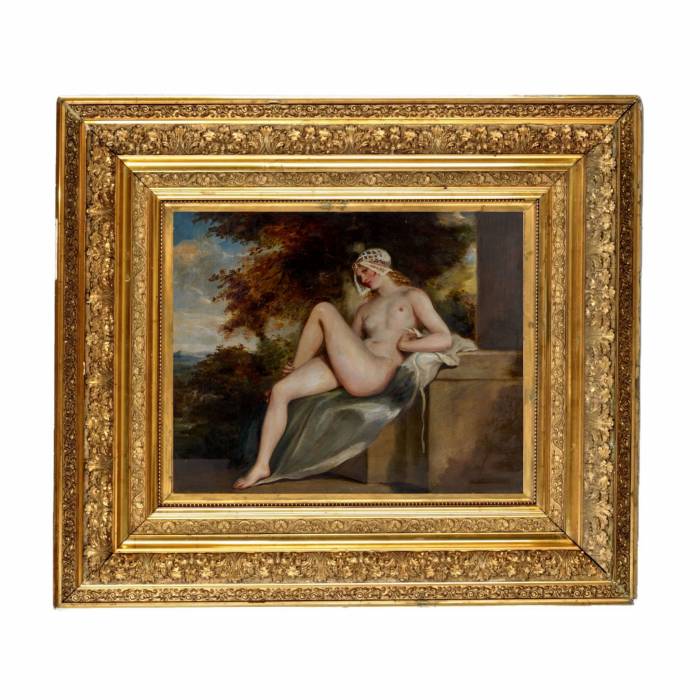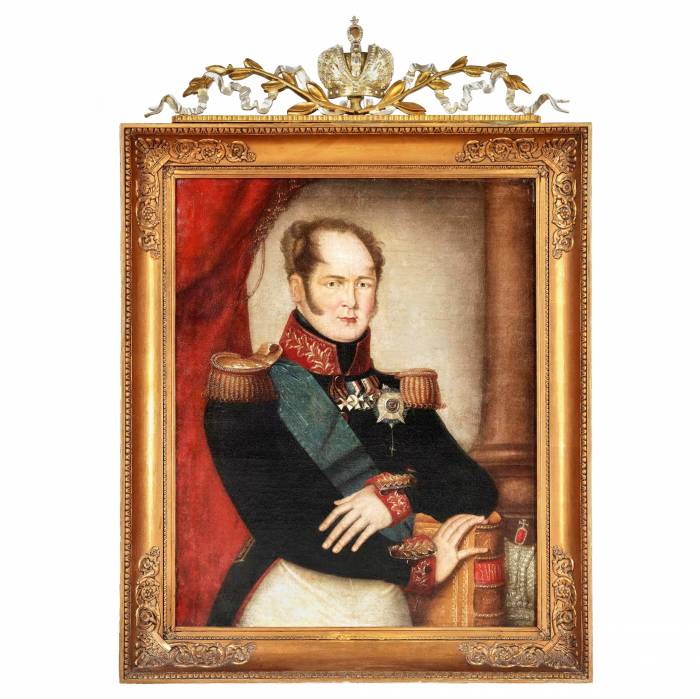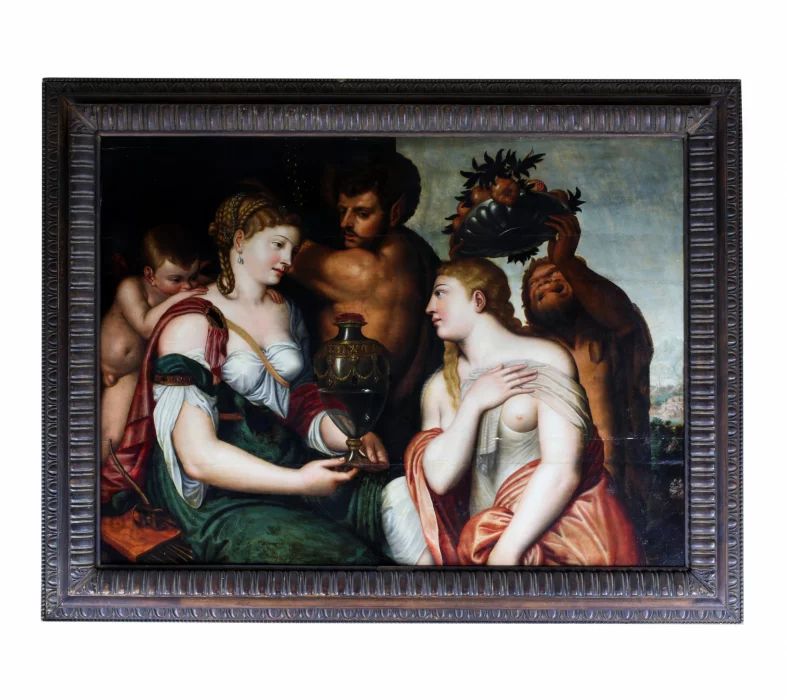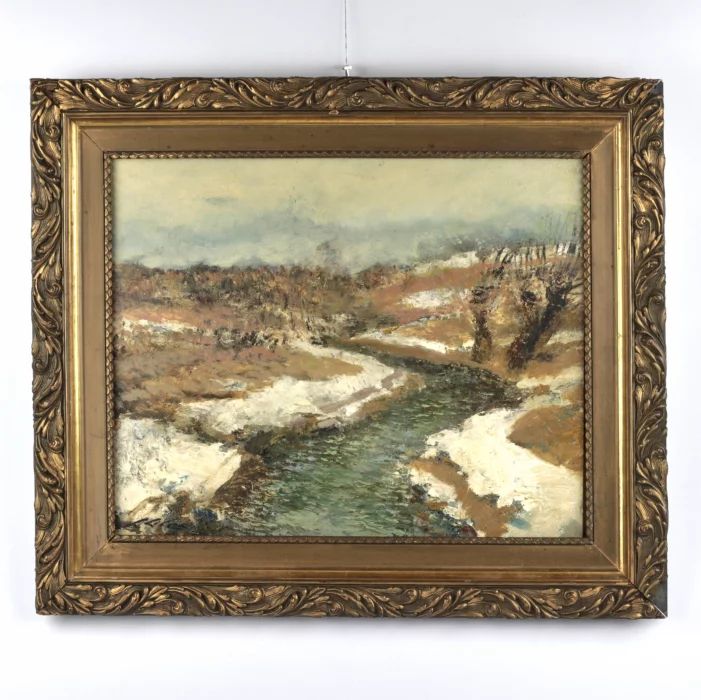A bust portrait of a young woman, traditionally identified as Margaret Lemon — the mistress of Flemish painter Anthony van Dyck — executed in his London studio around 1635–1640. The woman is depicted in three-quarter profile, yet she gazes directly at the viewer. Her hand, with slender fingers, rests against her chest, while her face is illuminated by soft light, emphasizing velvety skin, the pink of her cheeks, and the delicate curve of her lips.Flowers in her hair and a pearl necklace form a symbolic chain, representing purity, transient beauty, and the awareness of lifes brevity. The composition is immersed in a mysterious, shimmering background that enhances the psychological depth of the image and evokes a sacred mood. The hand gesture, pointing inward, transforms the portrait into a meditation on mortality and dignity. The light drapery, almost sculptural in form, conveys a sense of inner peace and weightlessness.The painting demonstrates refined technique: smooth, translucent layering, the pearlescent glow of pearls, and soft volume modeling — all hallmarks of studio works created under Van Dyck’s direct supervision. The portrait possesses all the attributes of a work from the master’s immediate circle: sophisticated technique, elegant iconography, and rare emotional resonance.
Expertise: The work is accompanied by authoritative attributions and expert opinions and has direct parallels with compositions listed in Van Dyck’s catalogue raisonné (Susan J. Barnes, Wvz. Nr. IV 156).
Dimensions: Framed: 60 × 50 cm; Unframed: 40 × 30 cm
Material: Oil on oak panel
Provenance: Private collection, Europe
Anthonis van Dyck (1599, Antwerp – 1641, London) was one of the most influential portrait painters of the Baroque era. A pupil of Peter Paul Rubens, he soon developed his own style, more focused on capturing individuality than on decorative grandeur. After travels in Italy and the Netherlands, Van Dyck was invited in 1632 to the court of King Charles I of England, where he became court painter and was knighted. His English period represents the height of his portraiture.It was in London that Van Dyck met Margaret Lemon — a young Englishwoman who became his lover and muse. She entered his life not only as a companion but also as a key model. Van Dyck painted several portraits of her — from intimate depictions to compositions with mythological or allegorical undertones. All are united by his sincere interest in her inner world. She is not a court lady, but a living woman — proud, sensual, slightly ironic, and open.The portrait presented here is particularly lyrical and symbolic. It belongs to a group of works in which painting becomes the language of the soul. There is no grandeur, only presence — the gaze, the necklace, the flowers, and the hand, as if frozen in an eternal moment. This gives the portrait a universal reading — as an image of Love, Memory, or Fading Youth. It links to the tradition of vanitas and, at the same time, to new, more intimate forms of 17th-century portraiture.In addition to its aesthetic and emotional features, the workshop context is important: such works were often created in collaboration with students under the masters supervision, without diminishing their artistic value. In this case, we are dealing with a studio work of Van Dyck’s circle, clearly embedded in the aesthetics and iconography of his English period.
Expert Opinion
The painting is accompanied by a handwritten letter of expertise from the distinguished art historian Dr. Max J. Friedländer (1867–1958) — former director of the Berlin Picture Gallery and one of the foremost specialists on Old Masters. In the letter, he describes the piece as “a spiritually painted, expressive, and sensitive work, akin to the finest creations of Van Dyck’s English period.”A second attribution is provided in a letter from Drs. Jan Kosten — curator of the RKD (Netherlands Institute for Art History, The Hague), dated 12 February 2009. He confirms that the portrait, in both composition and emotional rendering, is close to known images of Margaret Lemon and was likely created in Van Dyck’s studio. Dr. Kosten notes that details such as hairstyle and attire may have been added later, but the base composition and painting match a studio work from the master’s circle. He also highlights the work’s high artistic merit and emotional expressiveness.The painting corresponds to composition Wvz. Nr. IV 156 listed in Susan J. Barnes’s definitive catalogue, Van Dyck: A Complete Catalogue of the Paintings — one of the most authoritative sources on the artist.
Oil on oak panel in good condition. Minor natural craquelure and slight varnish toning consistent with age. No visible signs of restoration. Structure and surface well preserved.This condition report is provided for information purposes only.It is not a comprehensive report and may not reflect all imperfections, restorations, or alterations. Antiqon does not perform professional conservation-grade evaluations. The information is based on the qualified, yet subjective, assessment of our specialists.We recommend consultation with an independent expert before making a purchase decision.Please also consult the Auction Rules and Glossary, which contain important information about the characteristics and terms of sale for presented lots.
